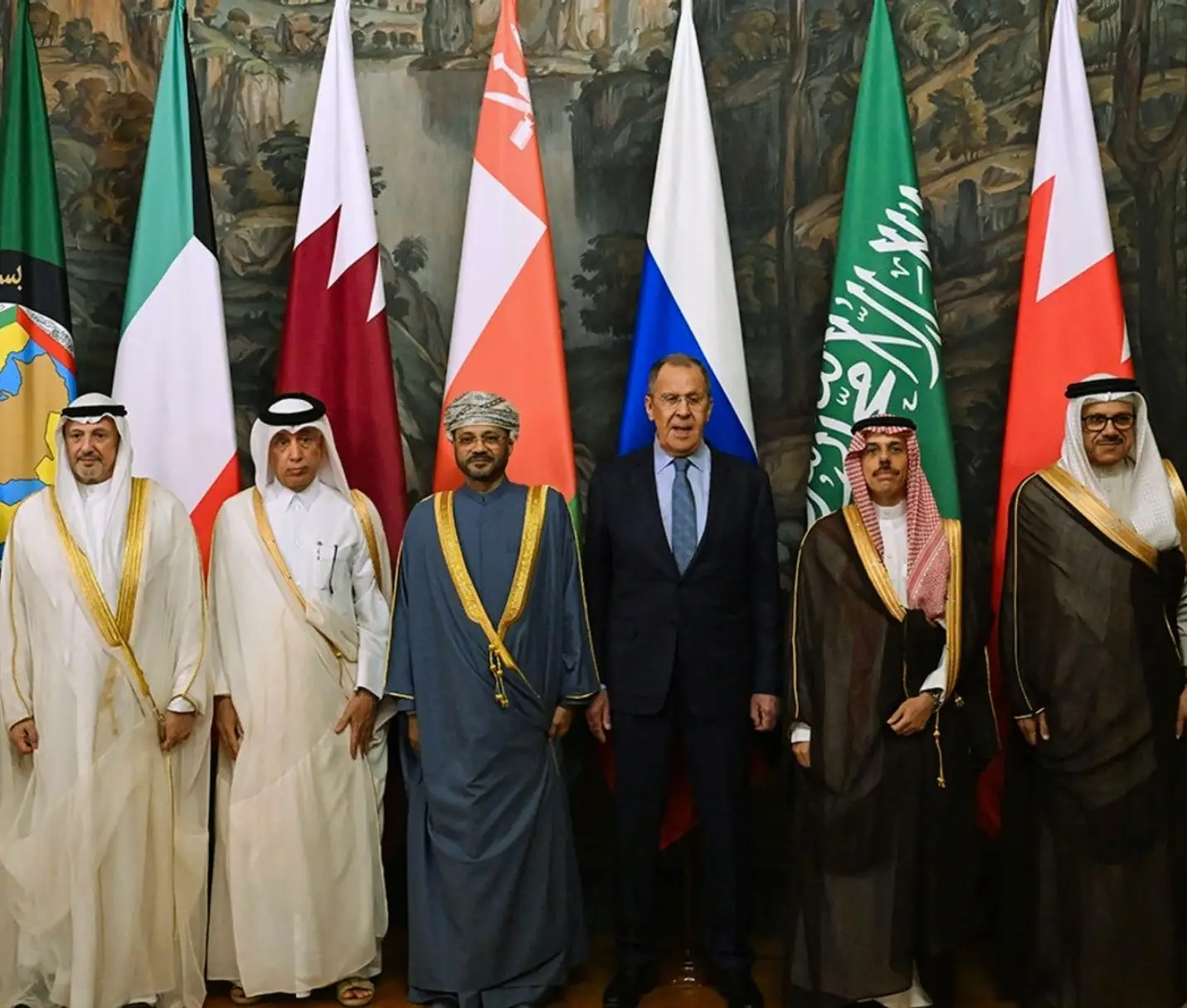On April 2, 2025, President Donald Trump revealed sweeping and unprecedented tariff regime that marked a fundamental reconfiguration of United States’ approach to international trade. Donald Trump termed it a necessary intervention to strengthen the international economic position of United States and protect American workers, President invoked executive powers to declare a national emergency and instituted a baseline 10% tariff on all imports from every country. President Trump publicly outlined disparities in trade tariffs imposed on United States by various countries, compared to the reciprocal tariffs imposed by the U.S. under a discounted structure. According to official data, Trump claimed that countries like Vietnam, Cambodia, Sri Lanka, and Bangladesh impose significantly higher tariffs on U.S. good; 90%, 97%, 88%, and 74% respectively compared to relatively low U.S. reciprocal tariffs of 46%, 49%, 44%, and 37%. He further stated that even major economies such as China (67%), India (52%), and South Korea (50%) levy much higher tariffs on the United States than what the U.S. charges in return—34%, 26%, and 25%, respectively. Interestingly, some countries such as United Kingdom, Singapore, Brazil, and Chile have equal or lower tariff rates on U.S. goods with more balanced or even favorable trade terms for USA.
Trump mentioned that South Asian region shows a sharp imbalance: India, Pakistan, Bangladesh, and Sri Lanka all charge disproportionately high tariffs on U.S. products ranging from 52% to 88%, while the U.S. reciprocates with significantly lower tariffs of 26% to 44%. While comparing the tariffs, Trump administration argued to justify reciprocal trade reforms. Additional punitive rates were levied on strategic trading partners, including 35% on imports from China and Vietnam, 25% on European Union member states, and 20% on goods from Canada and Mexico. These measures immediately reverberated through global markets and diplomatic corridors with strong condemnation and concerns of retaliatory economic action.
The legal foundation of these tariffs has ignited significant constitutional and institutional debate. Although Article I, Section 8 of U.S. Constitution assigns Congress the power to regulate foreign commerce, President Trump’s use of emergency authorities has shifted the locus of trade policymaking to the executive branch. Experts characterized this maneuver as an egregious violation of the constitutional separation of powers with warning that such unchecked executive action could imperil the foundations of democratic governance. While the courts may eventually adjudicate the legitimacy of this trade realignment, the intervening economic uncertainty is likely to generate substantial global instability. Congress retains the authority to reassert its legislative primacy by revising or revoking the enabling statutes that permit such broad executive discretion, yet thus far has remained largely inert.
It’s believed that president’s discretionary authority in trade matters has been facilitated by the ambiguous statutory language embedded within prior legislation, as well as an evolving narrative that increasingly conflates economic competition with national security threats. The securitization of trade policy, a trend that began as early as 2019 with the Trump administration’s obstruction of the WTO appellate body, has served to expand the president’s power under Article II of the Constitution. This permits the executive branch to bypass traditional economic deliberation in favor of unilateral protectionist measures justified on the grounds of national interest. It is noted that rise in national security notifications at WTO highlighted global proliferation of this tactic, which risks rendering international trade governance ineffective. These aggressive tariff measures are anticipated to produce a cascade of economic ramifications, both domestically and globally. Sectors heavily dependent on imports such as automotive, energy, electronics, and agriculture are likely to face increased costs and supply chain disruptions. For instance, tariffs on Mexican produce could lead to inflated grocery bills in the U.S., as Mexico is the country’s largest supplier of fresh fruits and vegetables and nearly half of all auto parts used in U.S. manufacturing are sourced from Canada and Mexico. The compounded effect will likely be passed on to consumers, which can strain household budgets and diminishing purchasing power.
Moreover, the imposition of these tariffs is already prompting retaliatory threats from key trading partners. China has announced reciprocal duties on U.S. energy products, automobiles, and agricultural exports that were previously impacted during 2018–19 trade war. European Union is reportedly preparing to respond with targeted tariffs. Canada and Mexico, while initially restrained, have indicated their willingness to introduce countermeasures. The specter of a global trade war looms large with the potential to fracture long-standing commercial alliances and undermine multilateral trade architecture upheld by institutions such as WTO. Among the most controversial dimensions of administration’s policy is its proposal for reciprocal tariffs, whereby the United States imposes tariffs equivalent to those levied by other nations on American exports. While theoretically appealing, this strategy constitutes a radical departure from Most-Favored-Nation principle that has governed global trade since the postwar era. Experts cautioned that implementing this policy could introduce dramatic inconsistencies into U.S. trade law and could effectively dismantle existing free trade agreements and eroding the predictability upon which global commerce depends, if executed judiciously, reciprocal tariffs might serve as leverage to renegotiate inequitable trade relationships. However, a haphazard or retaliatory application could destroy residual trust in global trade rules and severely constrain competitiveness of U.S. firms. Additionally, Trump administration has faced criticism for selectively justifying its trade actions by invoking the principle of reciprocity without acknowledging the high tariffs already imposed by the United States.
To define future discourse, according to U.S. National Economic, more than 50 countries have contacted President Trump in an effort to open negotiations following his announcement of sweeping new tariffs this week. Indonesia and Taiwan have stated that they will not impose retaliatory tariffs, while Israeli Prime Minister Benjamin Netanyahu is set to visit Washington, D.C., for trade talks with President Trump. Meanwhile, UK Prime Minister Keir Starmer has warned that the world as we knew it has gone, and emphasized that his government stands ready to take necessary measures to protect the British economy. Although economic experts caution that tariffs could lead to rising prices for consumers, while President Trump has urged the American public to “hang tough” in the face of growing market volatility.
Implications for India, Pakistan, and South Asia
The tariff on Indian exports and Pakistani goods is particularly consequential for South Asia, a region already grappling with fragile economic recovery post-pandemic and escalating geopolitical tensions. India, the United States’ ninth-largest trading partner, exports pharmaceuticals, textiles, engineering goods, and information technology services. The tariff spike is likely to erode the competitiveness of Indian exporters, especially in textile and generic drug sectors, potentially leading to job losses in labor-intensive industries and decreased foreign exchange earnings.
For Pakistan, a country heavily reliant on textile exports and already burdened with external debt and inflation, the new tariffs could further constrain its struggling economy. Pakistani exporters may lose access to one of their top trade destinations, which could widen the country’s trade deficit and suppress industrial output. More broadly, these trade disruptions could undermine regional integration initiatives such as the South Asian Free Trade Area (SAFTA) and reduce intra-regional trade cooperation, as countries become more dependent on alternative bilateral or bloc-level trade alignments. Countries like Bangladesh and Sri Lanka, which export goods to U.S., fear similar tariff actions could be extended to them in future phases of the policy. South Asian economies largely export-driven and dependent on global supply chains stand to lose significantly from volatility and uncertainty triggered by unilateral U.S. trade actions. Lastly, heightened economic stress may trigger political instability, currency depreciation, and reduced investor confidence in the region. The ripple effect could hinder development projects, derail poverty alleviation programs, and weaken regional economic resilience, particularly in countries already facing fiscal challenges.






